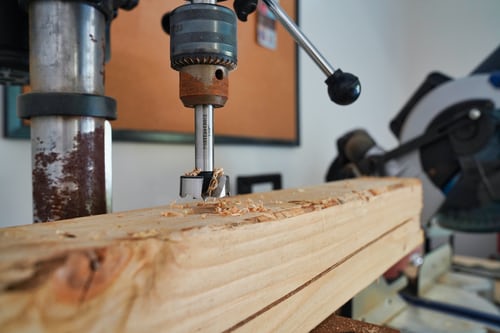8 of the Most Common Woodworking Mistakes

Woodworking isn’t easy to master, here are some common mistakes!

Photos By: Unsplash
We live in an era defined by mass-produced and soulless goods. There is great value in slowing things down and making your own handmade, handcrafted goods. Woodworking isn’t easy to master, however, and you will make a lot of mistakes along the way. In this article, we are going to tell you what eight of the most common woodworking mistakes are, and then, what the solutions to those mistakes are.
Cleaning Up
When beginners finish a job, it’s not uncommon to find a bombsite left in their wake. Keeping a workshop clean is hard, but it is important that you do. If you do not clean your workshop up while you are going along, you will create more of a task for yourself when you are finished. Dust off tables, work surfaces and clean up the floor as you go along. When you are cutting wood, you can release a lot of dust into the air and it can settle onto your finished project. To avoid this, finish in a separate place to where you work, or allow the dust to settle before applying polish and finishing.
Dull Blades
Dull blades can cause a lot of problems when you are working, including the aforementioned tearout, and kickback. You do not need to buy new blades when your blades begin to dull, however. The easiest way to keep your blades sharp is to buy a sharpener or to take your blades to a professional blade sharpener. The better the blade, the less likely it will dull, and the easier it will be to sharpen, so invest in a good quality blade from the very beginning.
Tearout
A tearout is what happens when fibers of the wood are torn out behind a saw. It can happen with a table saw or a miter saw, and even with a drill. You can avoid a tearout by paying a little more attention to your equipment before you start your job. Dull blades are usually the main cause of tearouts. Ideally, you should use a saw with fewer teeth. The more teeth, and the more chance of a tearout. When working with alternative materials like linoleum, you should use a specially designed blade.
Inaccurate Measurements
If you are new to woodworking, then you might not understand quite how important measurements really are. As a beginner, you might find yourself with too-short-a-tape-measure or none at all. Trying to guess measurements will only end badly. You need to ensure, before starting a project, that you have the appropriate equipment, including a tape measure. The only solution to something that has been incorrectly measured is to scrap it and go back again. Get into the habit of being precise in every action.
The Wrong Side of Your Line
Another mistake made by beginners (and experts) is cutting on the wrong side of your line. When you do this, you throw all of your measurements out of the window. Again, like with inaccurate measurements, if you saw on the wrong side of your line, you will need to go back and start all over again.

Holes and Cracks
If you are not delicate with the wood that you are working with, you can crack it. When you do crack or make a hole in the wood that you are using, then moving forward with your project without fixing it is impossible. To fix it, assuming the crack is not very large, you can use wood filler to fill it up. It’s easy, cheap, and can allow you to continue with your project without replacing the wood.
Improper Tools
Another mistake made by beginners often is using the wrong tool for the job. It is important that when starting out, that you get into the habit of always using the right tool. Individually know what every single tool on your rack is used for. A good way to avoid being left with a big job to do and the wrong tools is to invest, at the very start, in a huge collection of specialized tools. You can probably buy them second-hand.
Router Burn
Wood burns, didn’t you know? However, you do not have to leave burn marks on your wood when you are working with routers and saws. Burn marks can usually be sanded off or cleaned off, but you can avoid them altogether by using a clean, sharp blade to cut wood. Router burn can be slightly more complex to remove than saw burn, but to prevent it, clean your router before and after every single project.
Mistakes are a natural part of the learning process. The more you make, the more you learn. With that said, you shouldn’t ever go into a project intentionally making mistakes!






